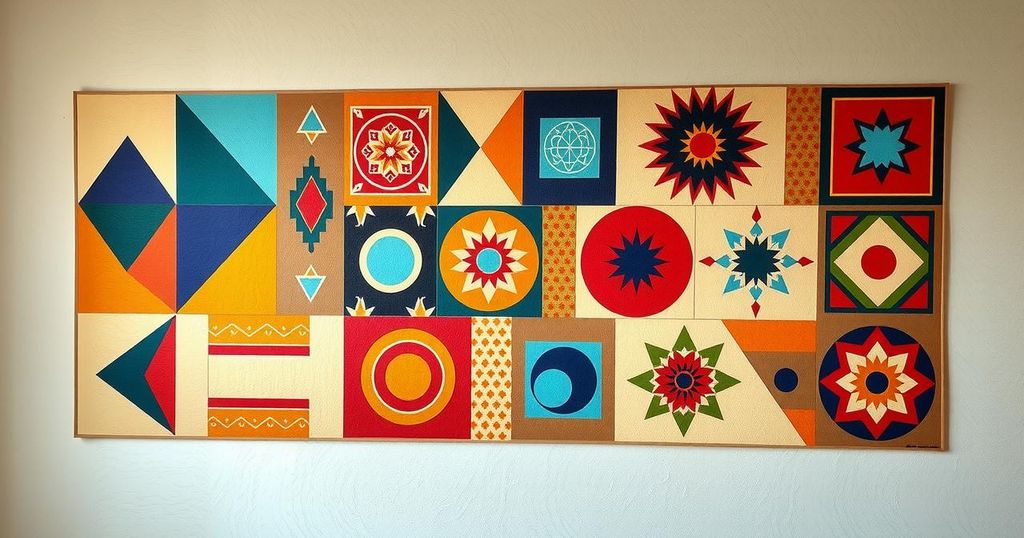Reflections of Exiled Sudanese Artists Amidst Civil War Devastation
Sudanese artists, reflecting on their displaced cultural landscape amid ongoing civil war, grapple with loss and identity. As numerous artworks have been destroyed, artists like Rashid Diab, Yasmeen Abdullah, and Ala Kheir continue to create in exile, preserving their heritage and advocating for Sudan’s narrative beyond conflict. Their voices highlight the resilience and depth of Sudanese art despite its devastation.
Rashid Diab, a prominent Sudanese artist, and his son Yafil Mubarak engage in a video conversation from their studio in Madrid, reflecting on their homeland’s turbulent artistic landscape amid an ongoing civil war. Diab poses a poignant question about preserving Sudan’s essence amidst devastation, while Mubarak seeks clarity on what it means to be authentically Sudanese. Together, they symbolize two generations, one filled with hope for change and the other grappling with disillusionment.
Since the outbreak of the civil war in April 2023, Sudan’s burgeoning art scene has suffered tremendous losses. Khartoum’s Downtown Gallery, which showcased a blend of senior and emerging artists’ works, has been devastated. Before the war, the gallery housed over 500 pieces, and its founder, Rahiem Shadad, estimates thousands of artworks have been lost nationwide. Unfortunately, hundreds of elder artists’ pieces lack a digital catalog, effectively erasing their legacy.
The war has displaced over 12.5 million Sudanese, including artists like Yasmeen Abdullah, who fled with her newborn during a power outage. Abdullah, now in Muscat, Oman, continues to create art, drawing inspiration from the poetry of Mahmoud Darwish. Her pieces, though distinct, evoke her Sudanese roots and are a testament to resilience in difficult times. She hopes her work will help her son find his identity reflected within her art.
Ala Kheir, a photographer and founder of The Other Vision, emphasizes the importance of capturing Sudan’s diversity, often overlooked in media portrayals of conflict. With the war necessitating a shift to remote operations, Kheir aims to document the destruction and the human stories behind it. He believes it is vital to highlight these narratives amidst the chaos.
Diab contemplates the concept of African art from exile, aiming to reflect Sudanese life through vibrant colors and depictions of daily realities. His narrative transcends borders, echoing sorrow for the loss of his cultural space in Khartoum. As the war continues, hope for a collective renaissance seems increasingly unattainable, and the possibility of return for many artists remains uncertain.
Yasmin Elnour, now in London, explores identity through her collage art, questioning the necessity of a physical location for identity to persist. In a time when Sudanese artists live in exile, Mubarak advocates for their role as cultural ambassadors. He asserts that they must represent Sudan beyond the narratives of conflict, emphasizing their identity as thinkers and creators within the global artistic landscape.
The ongoing civil war in Sudan has led to significant devastation within the country’s art scene, erasing countless works and forcing artists into exile. Through the reflections of prominent Sudanese figures like Rashid Diab, Yasmeen Abdullah, and Ala Kheir, the resilience of the artistic community emerges. Despite the challenges they face, these artists continue to create, documenting their culture and identity in the face of adversity. Their commitment to preserving Sudanese heritage showcases the strength of creative expression as a means of survival and remembrance.
Original Source: www.artnews.com




Post Comment